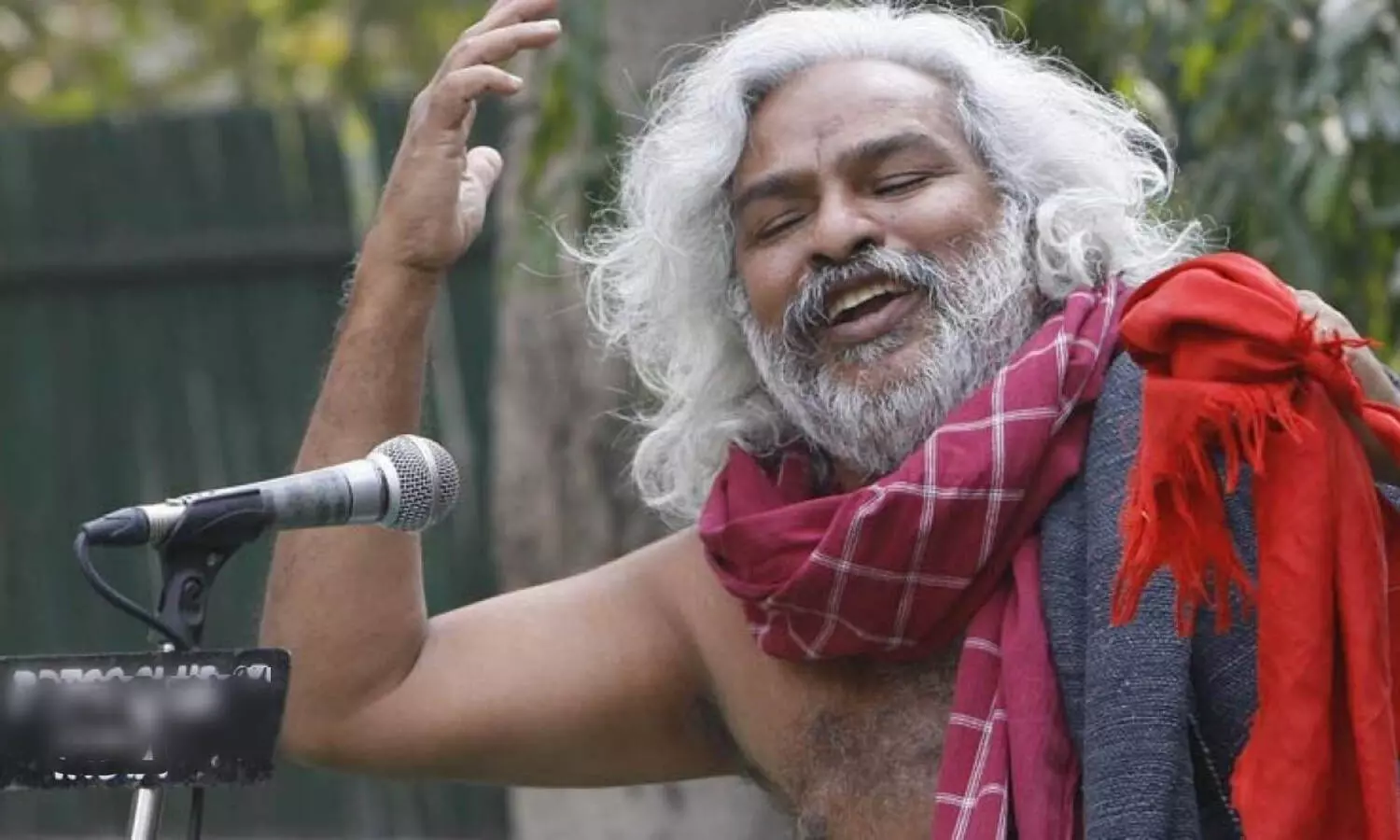Does Gaddar deserve Padma award?
Recently a minister of the BJP abused Gaddar saying he does not deserve the Padma award drawing a lot of criticism
By M Sridhar
Hyderabad: Padma award for Gaddar has created a controversy in Telangana
Hyderabad: February 5 marks the fifth year of the Ramanuja Statue's inauguration. Gaddar penned a poem on 11th-century Indian philosopher saint Sri Ramanujacharya. His `Statue of Equality’ is located on the premises of the ChinnaJeeyar Trust at Muchintal, Ranga Reddy district on the outskirts of Hyderabad. It is the second-tallest statue in the world.
No one knows Gummadi Vittal Rao. He is best known by his nom de guerre, Gaddar. Born in 1949, he was a poet, revolutionary balladeer, activist, and former Naxalite. Though died two years back, he cannot die as a modern Vaggeya Kaarudu, who can be a poet, music giver, songster, and above a great dancer. He went underground in the 1980s joined the Communist Party of India (Marxist-Leninist), and founded the Jana NatyaMandali, the Communist Party’s cultural wing.
He embraced the cause of an independent Telangana state and cut links with the Maoists in 2017, even though he had not been active as a Maoist since 2010. He had formed a new political party, the GaddarPraja Party. He had formerly backed the Congress.
He was shot by unknown perpetrators in 1997, and though he survived, a bullet remained lodged in his spinal cord. Gaddar was active in the Maoist insurgency and the movement for Telangana's statehood. Wearing ‘Gongadi’ a rough woolen, Gunghru’s, called muvvas with several knots, he won the hearts of the listeners whenever he appeared.
Why should we give him Padma?
Recently a minister of the BJP abused Gaddar saying he does not deserve the Padma award. It has drawn a lot of criticism. Whether he is abused or not awarded, his fans do not care.
As a poet, Gaddar sang a song about Ramanujacharya called "Randiroo, Randiroo, Ramanuja Jaatara” The song was inspired by the idea that Ramanujacharya taught the importance of equality and compassion long before his time. Gaddar the "Singing Rebel" sang about a variety of topics, including the pain of incarceration, the importance of freedom, and the comfort of a lullaby. Ramanujacharya is said to have taught that human love is the greatest religion.
Ghajni Mohammad (971-1030) was wrongly quoted as an example of perseverance for his repeated invasions to destroy the Hindu kingdom. The right model is Ramanuja because he made 18 attempts to convince Acharya Goshthi Poorna to impart to him the Asthakshari -Tirumanthra, and their inner meanings. Every time Acharya of Tirukosthiyur in Tamil Nadu used to return Ramanuja saying “Not now, come next”. He was testing his patience and ego-less-submissive-humbleness. He used to walk around 50 kilometers from Sri Rangam to that village and back disappointed. At his 18th attempt, Guru finally melted and mercifully granted the knowledge with a strong condition that he should not reveal to all and sundry without testing his abilities and qualities.
Gaddar wrote a song saying, “One person broke the laws of secrecy and revealed sacred mantras from top of the Gopuram to all, rebelled against caste-based hierarchical anarchy and respected non-Brahmin personalities as Gurus and Shishyas and opened the doors of temples for Dalits and tribals. Ramanuja, a highly revered Jagadacharya, the teacher of the universe, one of three recognized paths of realization – a) Advaitha- Mono Theist of Adi Shankaracharya, b) VishishtaAdvaita, refined dualistic by Ramanuja, and c) Dwaita, dualistic by Madhvacharya.
On completion of 1000 years after Ramanuja’s divine birth, the Prime Minister released a special postal stamp of Ramanuja. Prime Minister Narendra Modi delivered a profound speech on the life and philosophy of Ramanuja. He said: “The central message of Saint Ramanujacharya’s life was inclusive society, religion and philosophy. Saint Ramanujacharya believed that whatever is, and whatever will be, is but an expression of God. He saw the manifestation of God in Human beings, and Human beings in God. He saw all devotees of God as equal. When caste distinction and hierarchy had been recognized as integral to society and religion and everyone had accepted her place as high and low in the hierarchy, Saint Ramanujacharya rebelled against it.
Disclaimer: The opinion in the article is by the writer Prof M Sridhar Acharyulu, professor at Mahindra University, Hyderabad